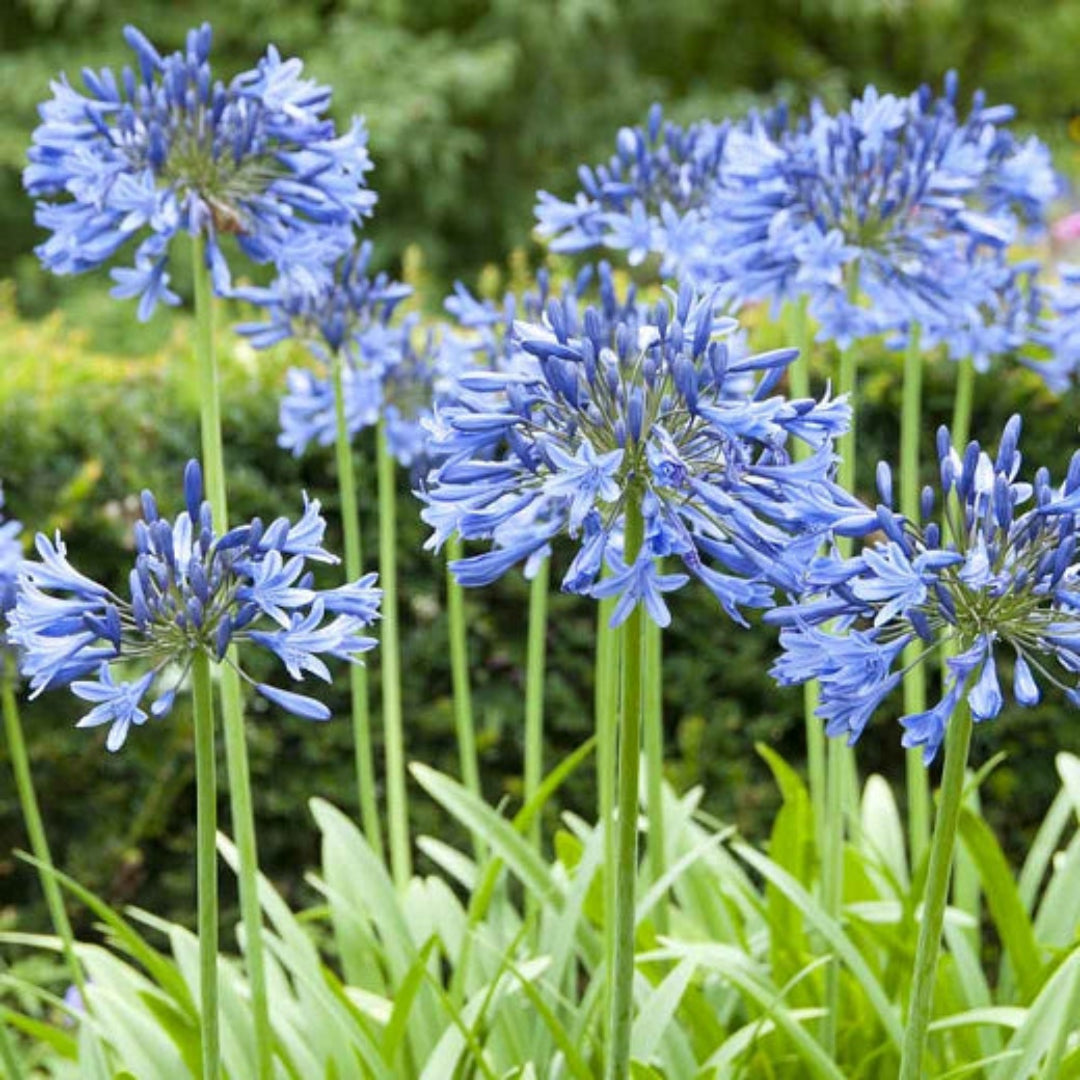Expanding Agapanthus: A Total Overview to Beautiful Blooms
Expanding Agapanthus: A Total Overview to Beautiful Blooms
Blog Article
Unleashing the Secret to Effective Agapanthus Cultivation: Tips and Techniques for a Flourishing Yard
In the realm of gardening, cultivating agapanthus effectively needs a calculated method that encompasses different facets of plant treatment. By recognizing the subtleties of agapanthus growing, one can create a setting where these plants grow and grow perfectly.
Growing Agapanthus: Finest Practices
When growing Agapanthus, proper dirt preparation is necessary for making certain successful growth and advancement of these stunning blossoms. Agapanthus, commonly called Lily of the Nile or African lily, prospers in well-draining soil with a slightly acidic to neutral pH level - Agapanthus. Before planting, it is crucial to change hefty clay soils with organic issue such as garden compost or peat moss to boost drain and offer important nutrients for the plants
To grow Agapanthus, pick an area that obtains complete sunlight to partial shade, as this will certainly promote healthy and balanced development and bountiful flowering. Dig an opening two times the size of the plant's origin round and put the Agapanthus at the very same deepness it was previously growing. Gently backfill the opening with dirt, pushing down securely to remove any kind of air pockets around the roots.
Water the freshly grown Agapanthus thoroughly and continue to keep the soil equally wet, especially during the plant's energetic expanding season. Agapanthus. Applying a well balanced plant food once a month can better support the plant's development and blooming. By adhering to these ideal practices for planting Agapanthus, you can create a sensational display of these captivating blossoms in your garden
Ideal Dirt Issues for Agapanthus
For optimal growth and growing success of Agapanthus plants, making certain the dirt conditions are ideal is vital. Agapanthus likes soil that is abundant in nutrients, so integrating a well balanced plant food throughout the expanding period can advertise healthy growth and vivid flowers.

Watering and Feeding Tips
To make sure healthy and balanced development and vibrant blooms, proper watering and feeding techniques are necessary for successful Agapanthus growing. Agapanthus plants take advantage of regular watering, specifically during the expanding season. It is recommended to water deeply when a week, making certain the soil is damp yet not soaked. During warm weather or in pots, more frequent watering might be essential to protect against the dirt from drying out totally.
When it pertains to feeding Agapanthus, a balanced plant food with equal components nitrogen, phosphorus, and potassium can be applied in the springtime to advertise healthy development and blooming. Slow-release fertilizers are optimal for supplying nutrients progressively over an extended duration. Prevent over-fertilizing, as this can cause find out extreme foliage growth at the cost of blossoms.
Additionally, including organic matter like compost right into the soil can enhance nutrient levels and enhance soil framework, assisting in the total health of the Agapanthus plants. this website By complying with these watering and fertilizing pointers, garden enthusiasts can guarantee their Agapanthus plants flourish and produce stunning displays of blossoms.
Pruning and Deadheading Techniques
Appropriate trimming and deadheading strategies play a critical role in preserving the health and wellness and aesthetics of Agapanthus plants, enhancing the essential methods of watering and fertilizing for successful growing. Trimming Agapanthus involves removing spent blossom heads, dead or yellowing fallen leaves, and total shaping of the plant to promote far better growth. Deadheading, the procedure of removing faded flowers, not just boosts the plant's look but additionally urges additional blooming.
When deadheading Agapanthus, it is advisable to clip off the blossom stem at the base utilizing sharp, clean shears. This procedure redirects the plant's energy from seed production back right into origin and foliage growth, advertising a much healthier and more robust plant. Routine deadheading can expand the blooming duration of Agapanthus and avoid self-seeding, which this contact form can lead to congestion.
In terms of trimming, Agapanthus normally benefits from a light trim after flowering to tidy up the plant and urge fresh growth. Cutting down the invested flower stems and eliminating any type of dead or damaged vegetation helps maintain the plant's vigor and general look. Nevertheless, it is vital to stay clear of reducing into the crown of the plant, as this can deteriorate its wellness.

Protecting Agapanthus From Vermins and Diseases
Executing efficient pest and illness management methods is vital to protecting the health and vigor of Agapanthus plants in farming. One typical bug that affects Agapanthus is the Agapanthus borer, a caterpillar that passages into the plant, causing damages to the fallen leaves and flowers.
In addition to bugs, Agapanthus are at risk to illness such as origin rot and fungal leaf places. By remaining vigilant and addressing insect and disease concerns quickly, garden enthusiasts can help their Agapanthus prosper and thrive.
:max_bytes(150000):strip_icc()/agapanthus-growing-guide-7368912_06ba-bf1fa268243b451387986fbd1e2433b3.jpg)
Verdict
Finally, effective cultivation of agapanthus needs proper growing strategies, excellent dirt conditions, appropriate watering and fertilizing, routine trimming and deadheading, and protection from diseases and bugs. By following these techniques and tips, garden enthusiasts can guarantee a growing yard full of beautiful agapanthus blooms. Agapanthus. Keep in mind to maintain constant care and focus to information to promote the health and long life of these magnificent plants
When growing Agapanthus, correct dirt prep work is important for making certain effective growth and growth of these lovely blossoms.Water the freshly planted Agapanthus extensively and continue to maintain the dirt equally moist, especially during the plant's active expanding period.For optimal development and growing success of Agapanthus plants, guaranteeing the dirt conditions are suitable is critical. When transplanting or growing Agapanthus, make certain the soil is well-prepared to give the required structure for the plants to develop themselves efficiently. One common insect that affects Agapanthus is the Agapanthus borer, a caterpillar that tunnels right into the plant, creating damages to the fallen leaves and flowers.
Report this page